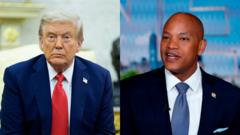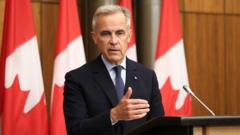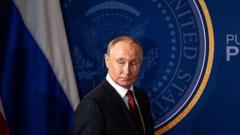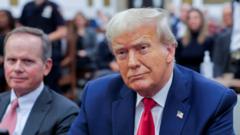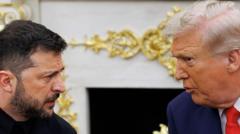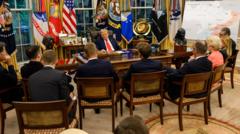As the July 9 deadline approaches, discussions for an India-US trade deal remain bogged down by complex issues surrounding agriculture, tariffs, and trade regulations. While both nations express optimism, the negotiations could lead to a limited 'mini-deal' rather than a comprehensive agreement.
Troubling Signs for India-US Trade Deal Negotiations
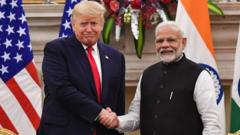
Troubling Signs for India-US Trade Deal Negotiations
Hopes for a significant trade agreement between India and the US are facing hurdles as negotiations intensify ahead of a critical deadline.
With a looming deadline of July 9, negotiations for a trade deal between India and the United States find themselves at a critical juncture, grappling with several contentious issues. Hopes for a comprehensive agreement, emphasized by US President Donald Trump's remarks about a "big, beautiful" deal, are struggling against a backdrop of hard-nosed bargaining and key obstacles that could jeopardize progress.
Despite statements from White House Press Secretary Karoline Leavitt and Indian Finance Minister Nirmala Sitharaman that indicate enthusiasm and a push towards an agreement, the two sides remain mired in tough discussions. Sticking points include agricultural access, tariffs on Indian steel, and the terms of automobile component trade. Indian trade officials have opted to extend their stay in Washington, indicating the seriousness of the ongoing negotiations, but they have also voiced "very big red lines" concerning protections for the farm and dairy sectors.
Negotiators are confronted with two main challenges before any consensus can be reached. The first revolves around US demands for increased access to India's agricultural markets, which many experts argue India is likely to reject in order to safeguard the interests of its farmers. The United States sees access to India's vast agricultural sector as a coveted opportunity, while India remains protective, prioritizing food security and the livelihoods of small-scale farmers.
The second challenge is India's non-tariff barriers, which the US has criticized as major impediments to market access. India's growing set of Quality Control Orders (QCO) complicates discussions, with experts noting that these rules could significantly limit US imports to India under the framework of a potential trade deal. While the US seeks to alleviate these import-quality regulations, Indian representatives have labeled them as necessary precautions to promote local industry.
Despite relatively modest current farm trade between India and the US, valued at approximately $8 billion, the US is aiming for a more significant farm export relationship that could impact its $45 billion trade deficit with India. However, experts caution that any reduction in tariffs could compel India to revisit its crucial minimum support prices, which protect farmers and their incomes.
The intricate web of these discussions implies that while a bilateral agreement is on the horizon, it may lean towards a limited 'mini-deal' akin to the recent US-UK trade agreement announced in May. Under this scenario, tariff reductions would focus on industrial goods in exchange for tactical commitments from both governments, leaving broader issues such as intellectual property rights and digital trading regulations for future negotiations.
Initially, the framework for these trade talks seemed to establish a clear division of focus between the labor and capital-intensive industries of India and the US. However, recent developments suggest a shift in priorities. If these negotiations were to falter, experts predict that the Trump administration is unlikely to revert to reinstating high tariffs on Indian goods, as targeting India could appear unjust. Nonetheless, potential unpredictability remains a hallmark of Trump's negotiating style, leaving room for surprises as the deadline approaches.


